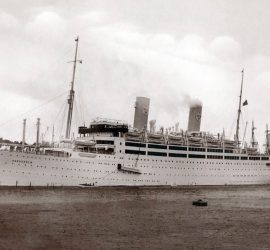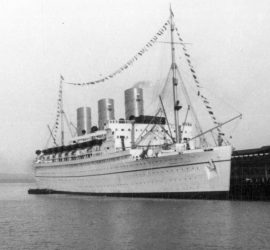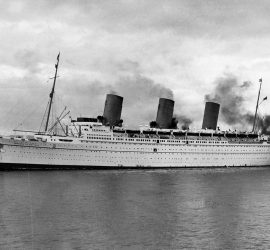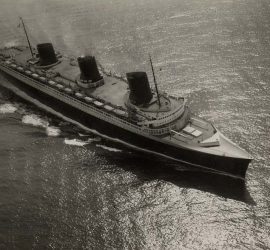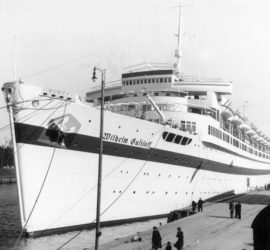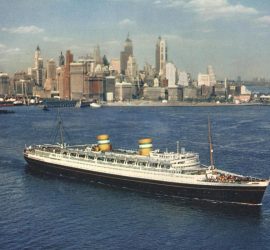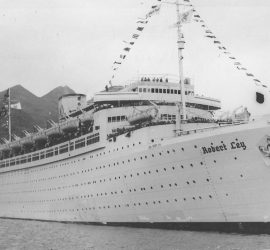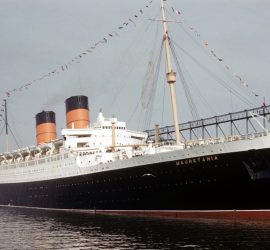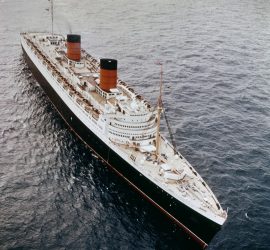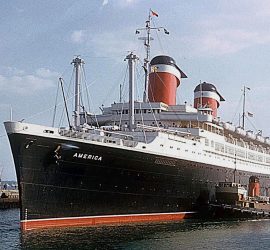1928 – 1965 / Also known as Italia / As Swedish-American Line’s second newbuild, the Kungsholm offered both crossings and cruisings up until the outbreak of World War II, when she was requisitioned and used as an American troopship. After the war, her career continued under a new name with Home Lines.
Henrik Reimertz
1930 – 1966 / Also known as Empress of Scotland (II) and Hanseatic (I) / Built during the interwar years, the second Empress of Japan was the fastest and largest Pacific liner of her time. She served in both peace and war, and was then given an extensive refit and saw a second career as the Hanseatic.
1931 – 1940 / Launched as the Canadian-Pacific Line’s largest ship to date, the second Empress of Britain quickly became a popular ship for both crossings and cruises. Sadly, her career was cut short by World War II, when she was torpedoed and sunk while employed as an allied troop transport.
1935 – 1946 / Arguably the most celebrated liner of all time, the Normandie was a French tour de force that would influence maritime design for decades to come. Her impact was enormous, but she tragically met her demise in New York harbour where she sank after having been ravaged by fire.
1938 – 1945 / Sprung from the Nazi scheme ‘Kraft durch Freude’, the Wilhelm Gustloff was built to offer German workers affordable cruises, keeping them happy and productive. Sadly, the ship’s name is today linked with tragedy, as she was sunk with enormous loss of life in the final days of World War II.
1938 – 1974 / Although heralded as ‘The Ship of Peace’, the lovely Nieuw Amsterdam would go on to serve as a troop transport in World War II. After the war, she went back to civilian service, and enjoyed a long and prosperous career with the Holland-America Line.
1939 – 1947 / Another ship of the ‘Kraft durch Freude’ project, the Robert Ley did not see much use as a cruise ship before World War II broke out. Utilised mainly as an accommodation ship, she was bombed in the port of Hamburg in the spring of 1945 and sent for demolition once the war was over.
1939 – 1965 / Part of a new breed of Cunarders, the second Mauretania saw just a few months of service before being called up for use as a troop transport. After the war, she had a prosperous career doing crossings and cruises, but was eventually sold for scrap when passengers abandoned liners in favour of air travel.
1940 – 1973 / Queen Elizabeth did not see passenger service until after World War II, during which she provided invaluable service as a troop transport. In peacetime, ‘Lizzie’ ran in tandem with Mary, earning Cunard a fortune. Sadly, her life came to an end in 1973 when she was destroyed by fire in Hong Kong harbour.
1940 – 1994 / Also known as Australis, Italis, Noga, Alferdoss, and American Star / The greatest American-built ship of her time, the America was the pride of the US merchant fleet and had a long career under various flags. She is perhaps best known for her tragic demise; grounded on the rocks of Fuerteventura, she was broken in half and slowly destroyed by the forces of nature.

